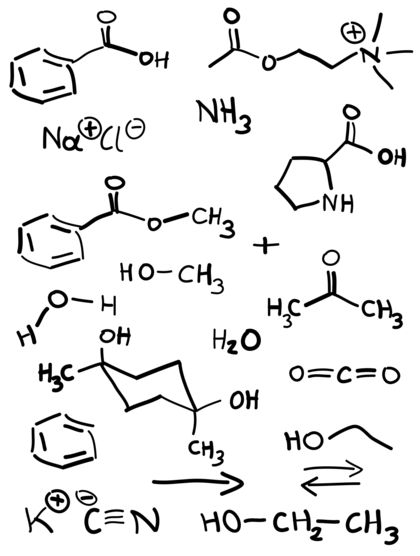What is Chemical Reaction and How are Reactants and Products Involved

A chemical reaction is a process in which one set of chemical substances transforms into another set of substances under favourable conditions. A chemical reaction involves changes in the position of electrons involved in forming and breaking of chemical bonds between two or more elements. It may involve a complete transfer of electrons, or simply sharing of electrons, depending upon the nature of elements involved. A chemical reaction is represented by an arrow sign (→). The chemical substances written on the right side of the arrow are reactants and those on the left side are products.
Ca CO3 + 2HCl → CaCl2 + H2O + CO2↑ is an example of a chemical reaction. A chemical reaction can be reversible, i.e. the products can react with each other to form the original reactants. A reversible reaction is represented by a two-headed arrow, pointing both directions in the chemical reaction. 2NaCl + CaCO3 → Na2CO3 + CaCl2 is an example of reversible reaction.
Instructions
-
1
Reactants
Reactants are the chemical substances that are used by chemists to create new substances, or the substances that are present before a chemical reaction takes place. They are written on the left hand side of the arrow in a chemical reaction.
In the chemical reaction Ca CO3 + 2HCl → CaCl2 + H2O + CO2↑, calcium carbonate (Ca CO3) and hydrochloric acid (HCl) are the two reactants. In terms of mole, this equation is described as, one mole of calcium carbonate reacts with two moles of hydrochloric acid to give one mole of calcium chloride, one mole of water and carbon dioxide gas. -
2
Products
Products are the substances obtained as a result of a chemical change. The products are conventionally written on the right hand side of the arrow. In the chemical reaction CaCO3 + 2HCl → CaCl2 + H2O + CO2↑, calcium chloride (CaCl2), water (H2O) and Carbon dioxide (CO2) are the products. Physical state is not necessarily maintained during a chemical reaction, which means solid reactants can form liquid or gaseous products.






